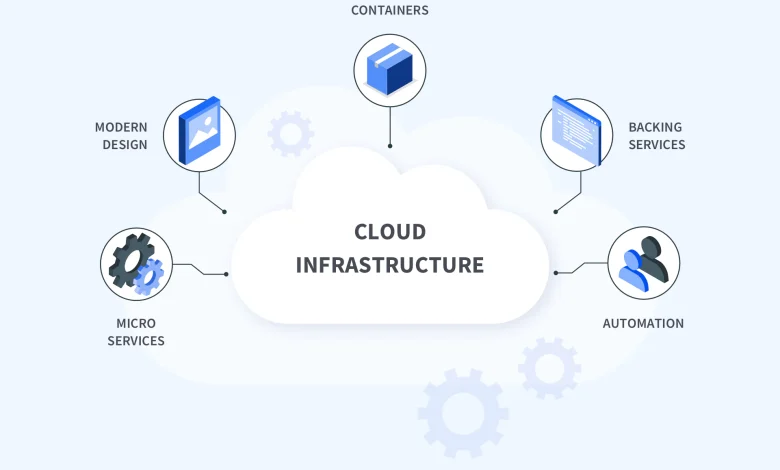Cloud-Native vs. Legacy Infrastructure

1. Understanding Cloud-Native Infrastructure
Cloud-native infrastructure is designed to leverage the advantages of cloud computing from the ground up. It relies on services, platforms, and tools optimized for cloud environments. This infrastructure focuses on microservices, containerization, automation, and DevOps practices. Cloud-native applications are typically deployed on cloud platforms like AWS, Microsoft Azure, or Google Cloud, which provide the resources necessary for scalable, flexible, and automated operations.
Because it’s built specifically for the cloud, cloud-native infrastructure offers high scalability. Resources can be added or reduced quickly based on demand, which is ideal for dynamic, fast-paced environments.
2. Understanding Legacy Infrastructure
Legacy infrastructure refers to traditional on-premises hardware and software. Many companies have relied on these systems for years or even decades. They include servers, physical storage, and applications that are often tightly integrated and challenging to scale or upgrade.
While legacy systems can still perform essential functions, they lack the flexibility and agility of cloud-native environments. Additionally, maintaining legacy infrastructure can be costly, requiring regular updates and specialized technical support. However, legacy systems may still be beneficial for companies with consistent workloads or specific regulatory requirements.
3. Key Differences Between Cloud-Native and Legacy Infrastructure
Cloud-native and legacy infrastructures serve different needs. Here are some key distinctions:
- Scalability: Cloud-native environments are highly scalable, allowing for quick adjustments based on demand. Legacy infrastructure, on the other hand, requires significant investment to scale, as it depends on physical hardware.
- Flexibility: Cloud-native systems support agile development and frequent updates, making it easier to introduce new features. Legacy infrastructure is often rigid and harder to modify, which can slow down innovation.
- Cost Efficiency: Cloud-native infrastructure usually follows a pay-as-you-go model, which can save costs. Legacy systems have high upfront costs and ongoing maintenance fees, making them more expensive over time.
- Deployment Speed: With cloud-native, developers can deploy updates frequently, as changes are automated and streamlined. Legacy systems often require manual intervention, slowing down deployment.
4. Benefits of Cloud-Native Infrastructure
Cloud-native solutions bring numerous advantages to businesses:
- Improved Scalability: Cloud-native infrastructure allows organizations to scale resources based on demand. This is especially useful for companies with fluctuating workloads, as they can easily add or remove resources as needed.
- Faster Development Cycles: The cloud-native approach supports DevOps and continuous integration/continuous deployment (CI/CD) practices. This speeds up development, testing, and deployment, reducing time-to-market for new features.
- Cost Savings: With cloud-native infrastructure, companies can avoid costly hardware investments. Instead, they only pay for the resources they use, optimizing spending based on actual demand.
- Enhanced Security and Compliance: Cloud-native providers often offer built-in security features and compliance tools. These help companies meet regulatory standards without investing in dedicated security infrastructure.
- Automation and Efficiency: Cloud-native infrastructure relies heavily on automation, which reduces manual intervention. Automated scaling, monitoring, and maintenance free up teams to focus on innovation rather than routine tasks.
5. Benefits of Legacy Infrastructure
Despite its limitations, legacy infrastructure still has some advantages:
- Control and Customization: Companies have complete control over their hardware and software with on-premises systems. This is beneficial for businesses with unique requirements or strict compliance needs.
- Data Security: Some organizations prefer to keep data in-house for security reasons. Legacy systems provide a contained environment, making it easier to control data access and comply with specific regulations.
- Long-Term Stability: Legacy systems are often stable and well-understood by the organization. This stability can be advantageous for companies that do not require frequent updates or rapid scaling.
6. Cloud-Native vs. Legacy Infrastructure: Factors to Consider
Choosing between cloud-native and legacy infrastructure depends on several factors. Here are some essential considerations:
- Workload Variability: Cloud-native is ideal for companies with unpredictable workloads. Legacy infrastructure works well for stable workloads that don’t require frequent scaling.
- Budget and Resources: Cloud-native solutions are cost-effective for companies seeking to minimize upfront investments. For businesses that can afford it, legacy systems provide control but require ongoing maintenance and specialized staff.
- Security and Compliance Needs: Organizations with strict compliance requirements may prefer legacy systems for their in-house control. However, cloud-native providers also offer security measures and compliance tools that can meet regulatory standards.
- Time to Market: Cloud-native infrastructure supports agile development, making it suitable for companies that need to deploy updates quickly. Legacy systems can slow down deployment due to manual processes.
- Technical Expertise: Cloud-native environments require cloud-savvy teams that understand modern development practices. Legacy systems may require specialized IT staff for maintenance and support.
7. Hybrid Infrastructure: The Best of Both Worlds?
For companies unable to choose between cloud-native and legacy infrastructure, hybrid solutions provide a balanced approach. Hybrid infrastructure allows organizations to combine elements of both, using cloud-native resources for specific applications while retaining legacy systems for core functions.
Hybrid infrastructure offers flexibility. For example, businesses can run customer-facing applications on the cloud while keeping sensitive data on legacy systems. However, managing a hybrid setup can be complex, requiring careful coordination to ensure seamless integration.
8. Case Studies: Real-World Examples
Many organizations have adopted cloud-native or hybrid solutions to improve their operations. For instance, Netflix utilizes a cloud-native infrastructure to manage massive workloads. Its cloud-native setup enables the company to scale resources up and down based on viewer demand, ensuring a seamless user experience.
On the other hand, financial institutions often retain legacy systems to manage sensitive customer data. However, they also use cloud-native resources to deploy customer service applications, balancing security with scalability.
9. Challenges of Cloud-Native and Legacy Infrastructure
Both cloud-native and legacy systems have their challenges. For cloud-native, data security, integration with existing systems, and cloud expertise are common hurdles. Companies often need to train employees and implement additional security measures when transitioning to cloud-native solutions.
For legacy infrastructure, maintenance, high costs, and limited scalability are significant concerns. As technology advances, legacy systems may struggle to keep up, requiring costly updates or replacements to maintain performance.
10. Conclusion: Which is Right for Your Business?
Choosing between cloud-native and legacy infrastructure depends on your business needs, resources, and growth goals. Cloud-native infrastructure offers scalability, flexibility, and cost savings, making it ideal for companies with dynamic environments. Legacy infrastructure, though more costly and less flexible, provides control and stability, which some industries require.
A hybrid approach can offer the best of both worlds, combining the security of legacy with the flexibility of cloud-native. By evaluating your organization’s specific needs and capabilities, you can make an informed decision that aligns with your business goals and supports future growth.





